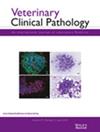An immersive simulation strategy to teach cytology sample collection methods and basic diagnosis skills: A two academic center study
Abstract
Background
Collecting cytology samples and making simple diagnoses are skills taught in veterinary universities, mostly in a passive way. Simulators enhance practical skills learning, increasing student engagement through immersive activities. These strategies have not been carefully assessed in veterinary cytology.
Objectives
This study aimed to describe a simulator developed for training cytology sample collection methods and assess the utility of an immersive simulation strategy to learn and practice the collection of cytology samples.
Methods
A flipped classroom with a station design was followed. Students first watched video tutorials on sampling collection, listened to brief cases' clinical histories, and moved to immersive simulator stations. There, they practiced imprints, swabs, and fine-needle aspiration (FNA). Microscopic observation of the material was available through augmented reality tools. Students were evaluated by Objective Structured Clinical Examination (OSCE) tools on their ability to perform FNA on stuffed animal models. Students answered two questionnaires addressing their learning outcomes.
Results
Second- and third-year students from two centers (n = 129) practiced cytologic collection methods in simulators which significantly changed their willingness to perform FNA in live animals after the class activities. OSCE pass rates over 90% were obtained for most steps of FNA, and students rated the activity as essential/very relevant for learning.
Conclusions
Immersive simulation strategies were effective at increasing student comfort with cytologic sampling techniques. This approach should be included in the veterinary curriculum as it can increase the quality of cytology samples and could potentially improve the cytologic diagnosis of a submitted sample.

 求助内容:
求助内容: 应助结果提醒方式:
应助结果提醒方式:


